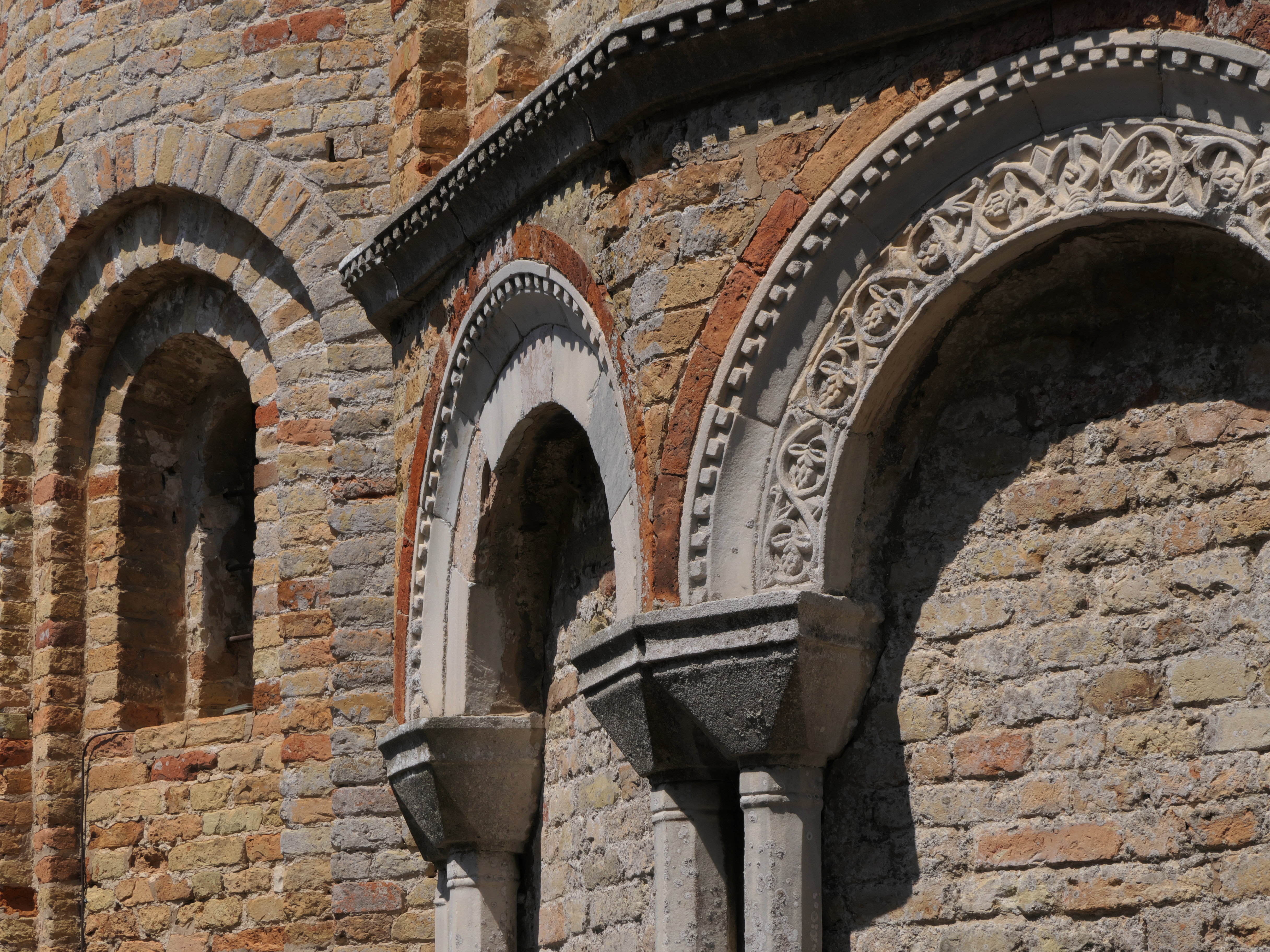 I sometimes complain about the choice of "remote" locations for textile art exhibitions, places that are difficult to reach by public transport, or invisible even to the most modern GPS tracker, instead this time I have to admit that getting to the exhibition venue was relatively simple, as long as you don't suffer from naupathy, that nuisance better known as “seasickness”. In fact, the Artlife for the World Contemporary Art Events association has chosen the island of Torcello for the "TerraCielo" event, an exhibition of installations that refer to environmental art.
I sometimes complain about the choice of "remote" locations for textile art exhibitions, places that are difficult to reach by public transport, or invisible even to the most modern GPS tracker, instead this time I have to admit that getting to the exhibition venue was relatively simple, as long as you don't suffer from naupathy, that nuisance better known as “seasickness”. In fact, the Artlife for the World Contemporary Art Events association has chosen the island of Torcello for the "TerraCielo" event, an exhibition of installations that refer to environmental art.
The relative proximity of the exhibition venue, added to the curiosity for absolutely non-traditional works, he convinced me to take a train to Venice, and then the vaporetto to Torcello, on a hot day in July (what not to do for art…).
Tutto bene allora? Ovviamente no.
I can tell you that, never having been there, the small island of Torcello impressed me very favorably, so far away cliché tourist, quiet and welcoming, and with a lot of history, from the ancient one, as it was permanently inhabited by the Venetians since the seventh century, to the more modern one, since right here Giuseppe Cipriani in the 1934 opened his inn, still in business, which hosted dozens and dozens of famous people (one name for all: Ernest Hemingway).
If I can only speak well of Torcello, the event we went to visit doesn't allow me either. Essentially, excluding some posters scattered here and there, of the exhibition one could not have enough knowledge. The works were undoubtedly interesting, but to see them you had to participate in a sort of treasure hunt with fleeting and sometimes contradictory clues, not to mention the fact that a couple were practically unreachable. Lacking a map or information trail, there was nothing left to do but wander around the church of Santa Fosca and the Villa '600 restaurant hoping to bump into some installation.
This explains the choice (ironic) of the title of this post, or my belief that those works should have enjoyed greater prominence, in favor of the artist who put his soul and sweat into it, in favor of those who happened to be passing through Torcello and could have discovered them, and all in all in favor of art, too many times a guest more tolerated than valued.
Despite everything we decided not to give up, and the images below show the most interesting things we saw in Torcello.
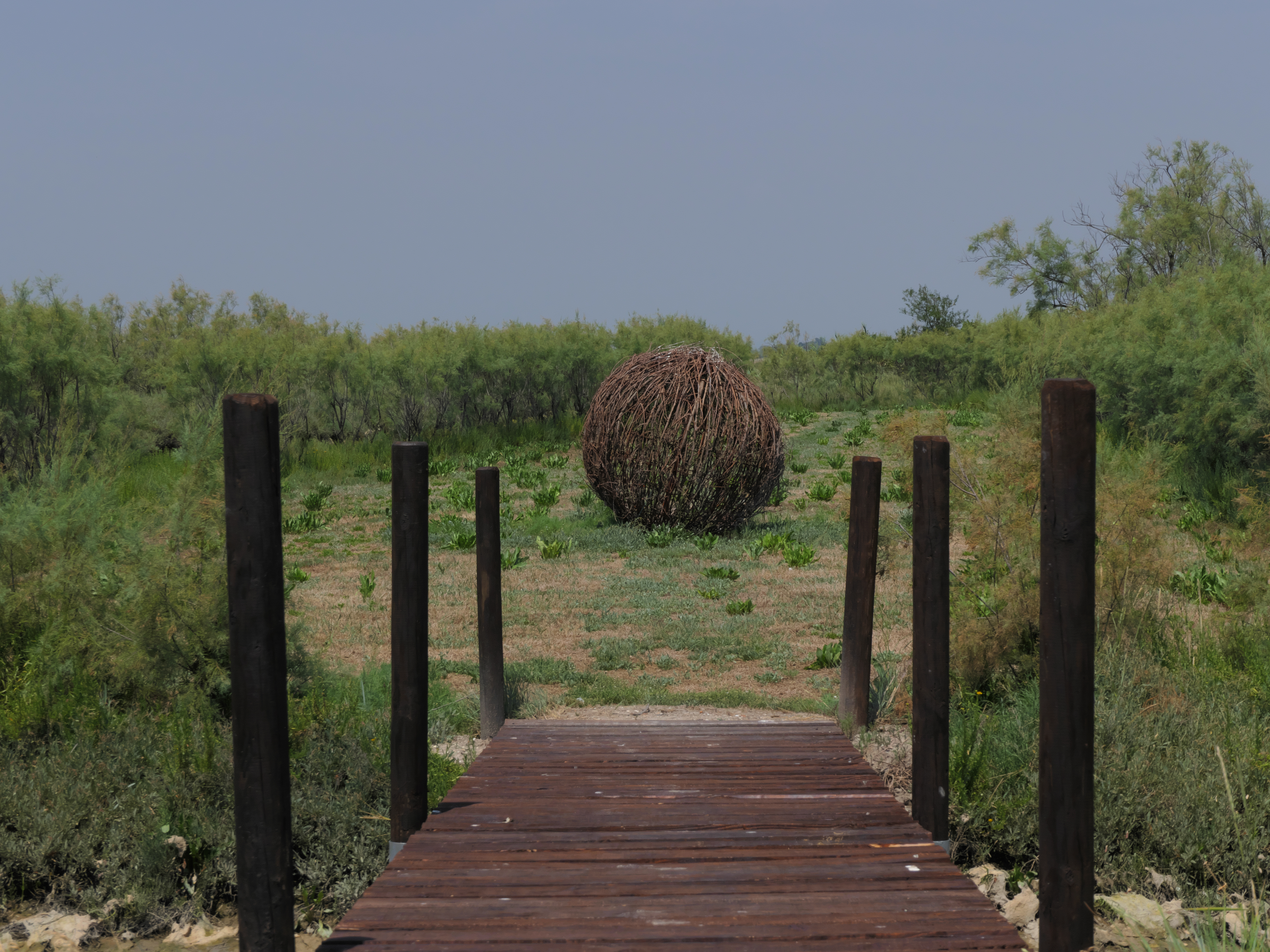
Gotthard Bonacini – Full moon
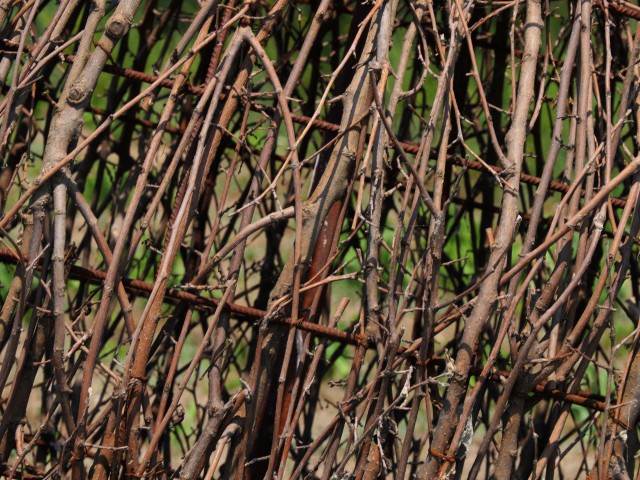
Gotthard Bonacini – Full moon – Detail
Gottardo Bonacini plays at home, in laguna. Architect, landscaper, gardener, greengrocer and vice-president of the Wigwam Club Giardini Storici Venezia, he found in nature the fundamental elements for his work. These are intertwined branches (mulberry?) which form a sphere around a Corten frame. It may be argued that Corten steel is not too natural, però andrebbe valutata una peculiarità di questo materiale, quella di formare una patina protettiva grazie a un naturalissimo processo di corrosione elettrochimica, il che evita di dover usare prodotti inquinanti per verniciarlo.
L’opera “Full moon”, che di notte appare illuminata, suscita comunque una vaga inquietudine, la stessa che si prova appunto nelle notti di luna piena, foriere di ispirazione, suggestione, struggimento, ma anche di ombre misteriose e arcane.
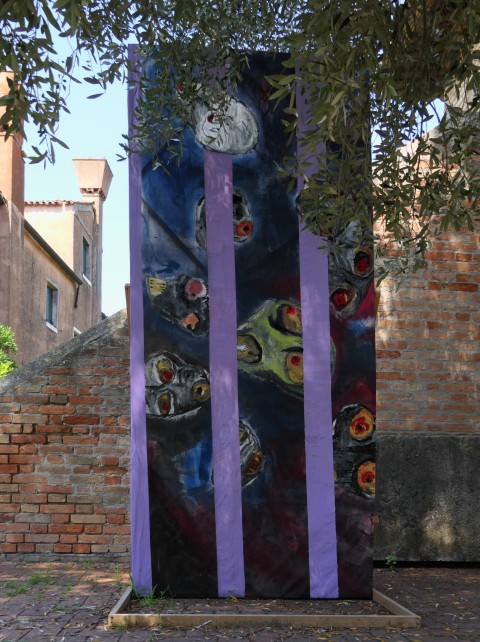
Paolo Stefani – Attila project
Arte e design sono elementi fondamentali per la formazione di un artista contemporaneo, però Paolo Stefani ha voluto aggiungere al suo bagaglio culturale anche studi di Fisica e Antropologia Generale all’Ecole du Louvre, a Parigi. Ciò gli ha permesso di attingere a esperienze diversissime per realizzare le sue opere, la natura, le mitologia, la scienza teorica, e persino l’alpinismo.
Nell’opera qui sopra egli ha voluto rendere visibile una metafora, quella della temporalità dell’uomo e delle sue brame di ricchezza e potere (un Attila appunto), contrapposte alla permanenza della natura che tutto sostiene e alle imperiture opere d’arte, queste ultime le rare cose che danno un senso superiore alla nostra esistenza.
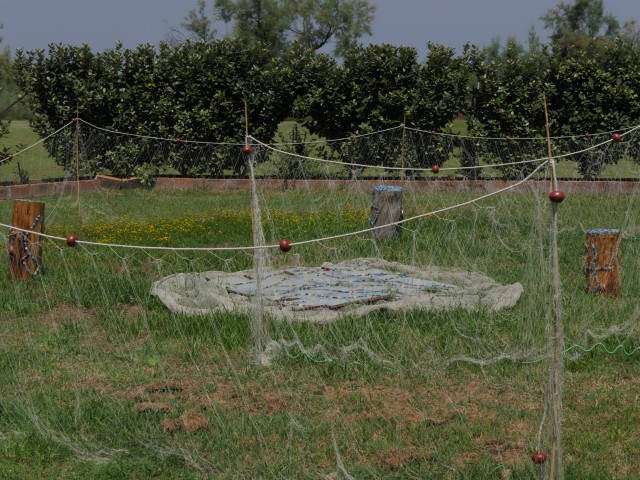
Claudia Corò – Submerged light
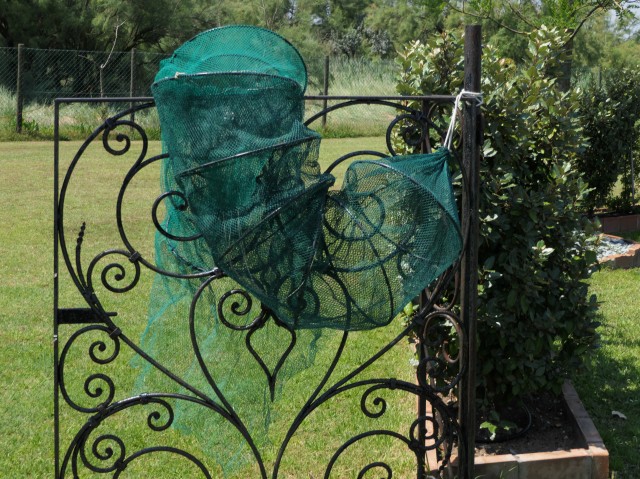
Claudia Corò – Submerged light – Detail
Nella basilica di Santa Maria Assunta a Torcello è sepolto Sant’Eliodoro, vescovo di Altino nel IV secolo. Il suo nome in greco significa “Dono del Sole”, lo stesso appellativo utilizzato per una pietra dai vitrei riflessi colore giallo oro e che un tempo veniva ritenuta portatrice di luce, gioia, calore e benessere.
Ed è appunto alla luce che dà vita alla laguna che l’artista veneziana dedica la sua opera, quella luce che si riflette sulle piccole onde, sulle lucide tessere dei mosaici, sulle argentee squame dei pesci, sulla vita di chi nel mare, sul mare e del mare vive.
In fin dei conti anche questa è un’opera tessile, giacché le reti che la compongono altro non sono che filo intrecciato ad arte, magari non la stessa di un arazzo, però non meno rappresentativa di una civiltà.
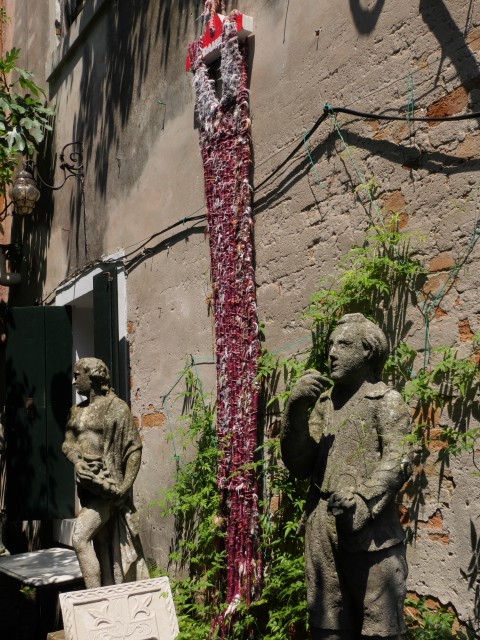
DAMSS Art – Torc1
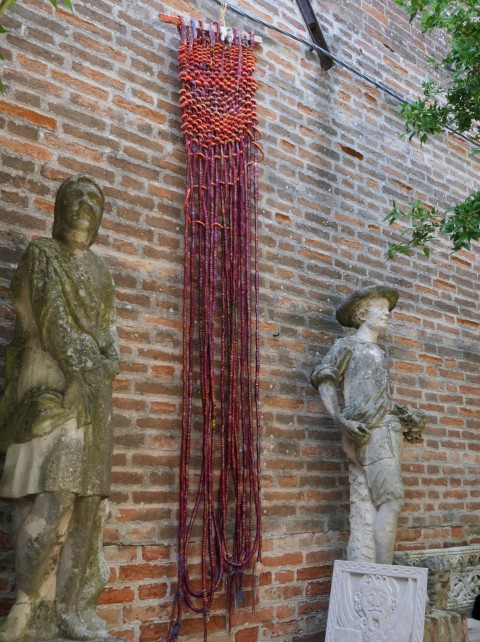
DAMSS Art – Torc2
Avrei voluto osservarle meglio queste due opere di Daniela Arnoldi e Marco Sarzi-Sartori (DAMSS), in fondo si può dire che era stata la loro presenza a sollecitarmi in quella gita lagunare, peccato che fossero “rinchiuse” behind a gate duly locked by a padlock whose owner was unknown.
The photos that we managed to take for better or worse do not convey the idea of the creative weaving of those textile lianas. “Torque” stands for Torcello but also for twisting, the fundamental process for the realization of the yarns, and it would have been interesting to closely observe the artistic interpretation of that versatile component without which the idea of the patchwork.
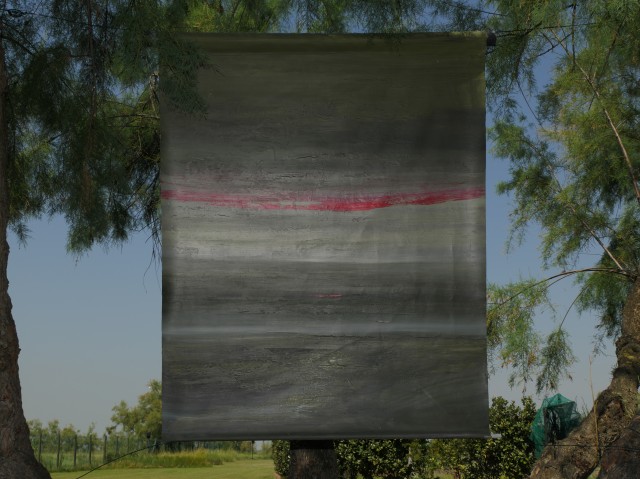
Paola Blazquez – Origin of the lagoon
Venice before Venice, I guess this is the meaning of Paola Blazquez's work, that is what an inhabitant of Torcello could see from his island at the first light of dawn, when there was only earth and sky, and sea, which for those who live in the lagoon is also land. No ships, no chimneys, no superb steeples that tilt under their own weight, but a light blanket of mist which will soon be dispersed by the rising sun, and silence, the silence of the light lapping against the wood of a small batela, the silence of the last land breeze that caresses the spartina, the silence of the calls of the shy dancers, the silence of the water just stirred to the surface by the passage of an eel or by the flicker of a horse mackerel, the silence of those who live their journey in this world in silence.
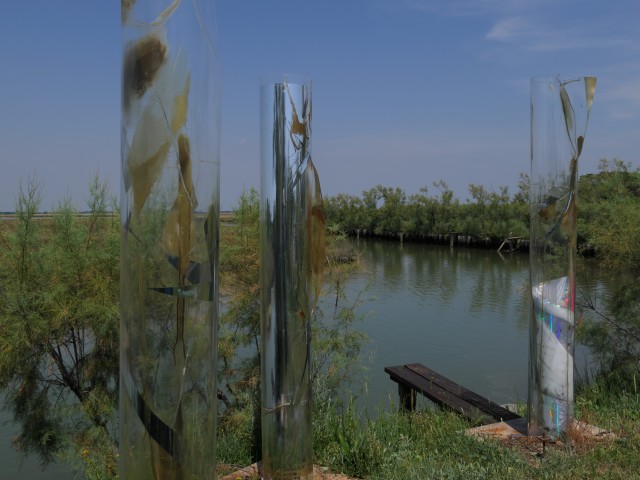
Candida Ferrari – Volumes and colours
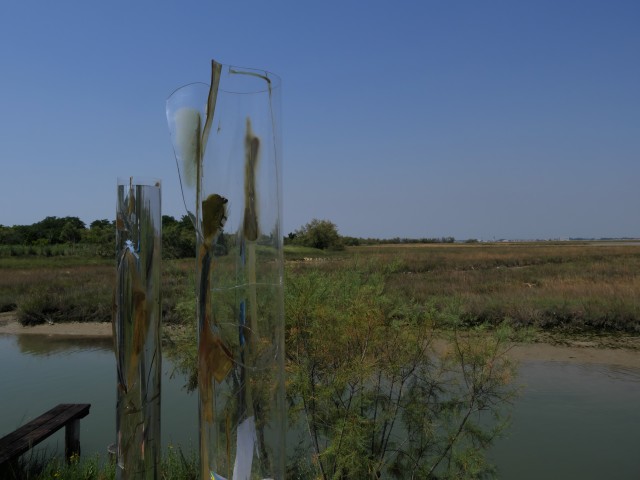
Candida Ferrari – Volumes and colours – Detail
The columns of Torcello's churches are not massive, bomb, rastremate, such as those in the Gothic style, rinascimentale, Baroque and later, tutt’altro, they appear almost slender, inadequate to support the massive walls of the early Christian style buildings, romanico, Byzantine, when instead the reality of the facts shows that the builders of the time knew their job well. There were no quarries near Torcello, nor were there any buildings from the Roman era nearby to be looted, so they made a virtue of necessity, sipping the stone with the measure of elegance.
Candida Ferrari was struck by that architectural choice, and has created an installation that pays homage to those builders and, thanks to transparency, to the first builder of the lagoon: la natura.
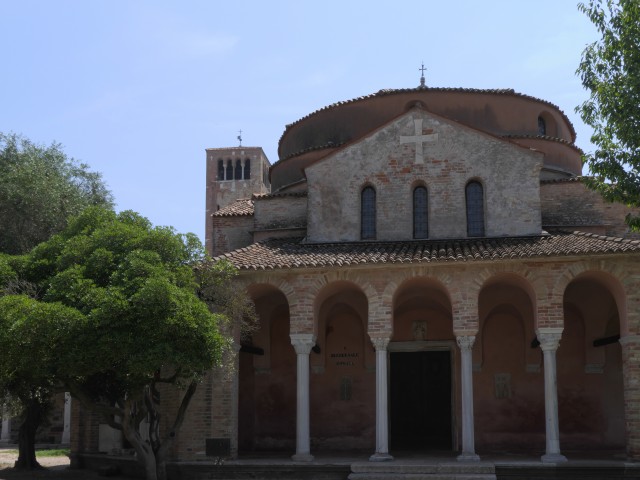
Torcello – The church of Santa Fosca
Bene, you know what they say, first duty and then pleasure, and here I have to thank Tea and Dario for giving us a treat (me and my photographer / guide / sherpa / ecc.) the opportunity for a splendid boat trip to Burano, and then up to Jesolo. If we also add that they made me discover the bovoetti and the moeche (going up internet if you want to know more) I can well say that it was an unforgettable day.
If you don't know Burano, here's a taste for you, and know that all houses are like this, all colorful.
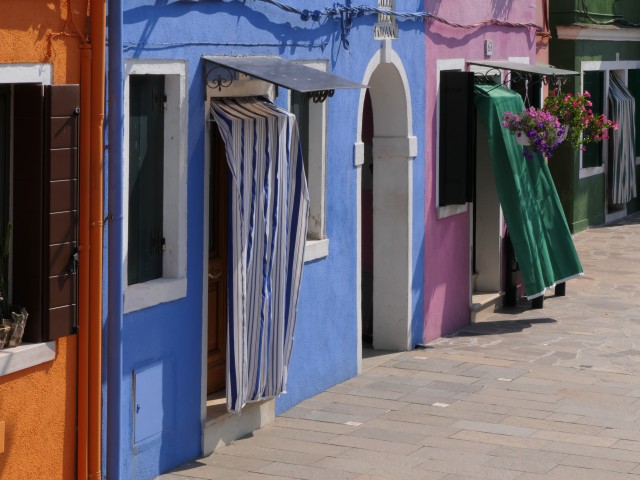
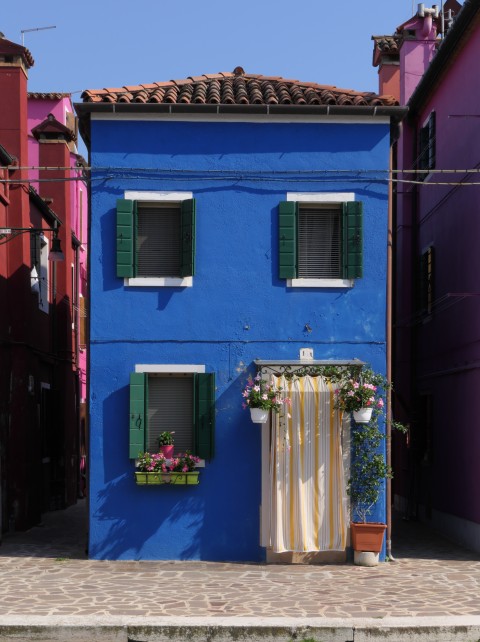 You have to be colorblind not to fall in love with Burano, and as textile artists you shouldn't miss a visit to the lace museum, an art unfortunately destined to disappear due to rarefaction (for obvious personal reasons) of Buranelle lace makers able to perform the famous “point in the air”, and after having seen those works one could even decide to throw away the needle and thread to devote oneself to something else…
You have to be colorblind not to fall in love with Burano, and as textile artists you shouldn't miss a visit to the lace museum, an art unfortunately destined to disappear due to rarefaction (for obvious personal reasons) of Buranelle lace makers able to perform the famous “point in the air”, and after having seen those works one could even decide to throw away the needle and thread to devote oneself to something else…
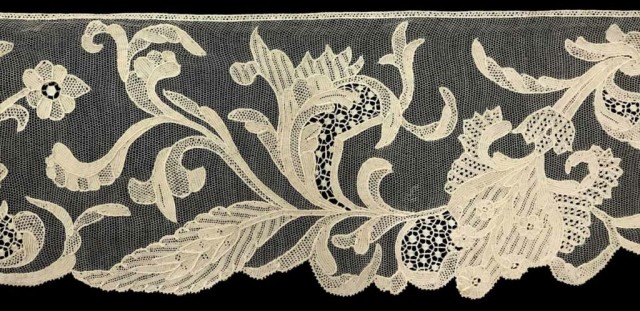
Image from grey-panthers.it
A presto!
Post Views:
1,592
Like this:
Like Loading...
Related
 I sometimes complain about the choice of "remote" locations for textile art exhibitions, places that are difficult to reach by public transport, or invisible even to the most modern GPS tracker, instead this time I have to admit that getting to the exhibition venue was relatively simple, as long as you don't suffer from naupathy, that nuisance better known as “seasickness”. In fact, the Artlife for the World Contemporary Art Events association has chosen the island of Torcello for the "TerraCielo" event, an exhibition of installations that refer to environmental art.
I sometimes complain about the choice of "remote" locations for textile art exhibitions, places that are difficult to reach by public transport, or invisible even to the most modern GPS tracker, instead this time I have to admit that getting to the exhibition venue was relatively simple, as long as you don't suffer from naupathy, that nuisance better known as “seasickness”. In fact, the Artlife for the World Contemporary Art Events association has chosen the island of Torcello for the "TerraCielo" event, an exhibition of installations that refer to environmental art.













